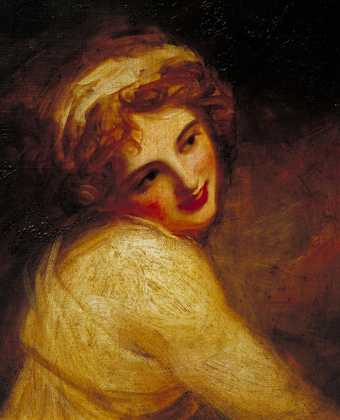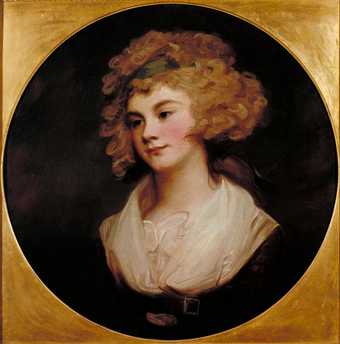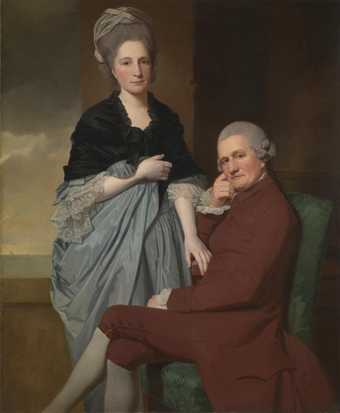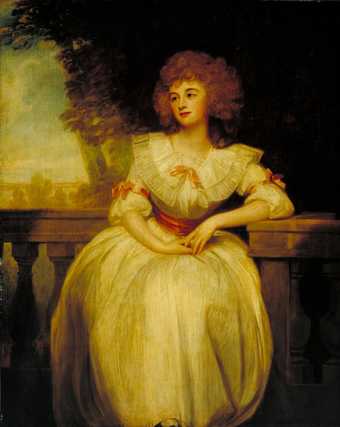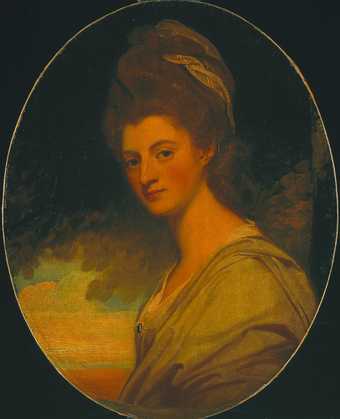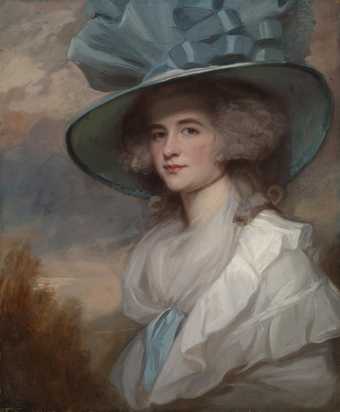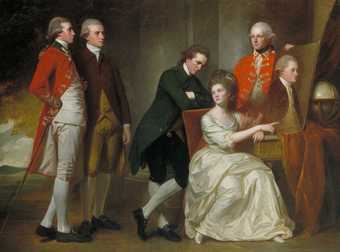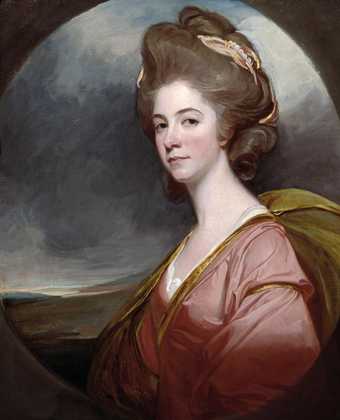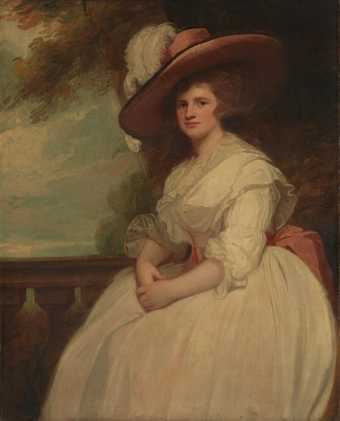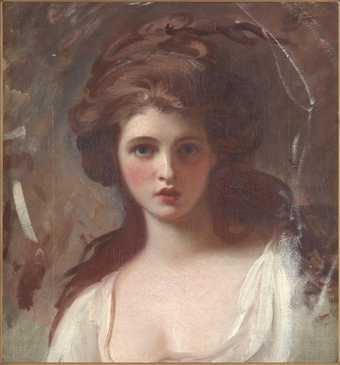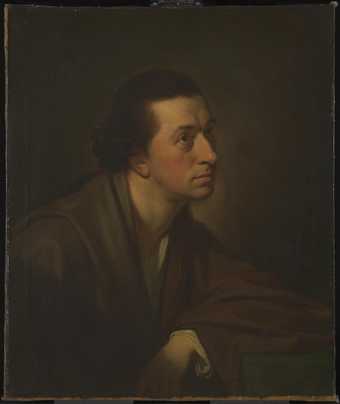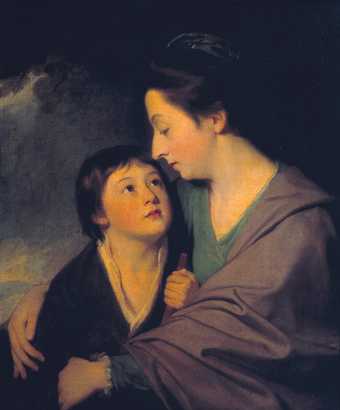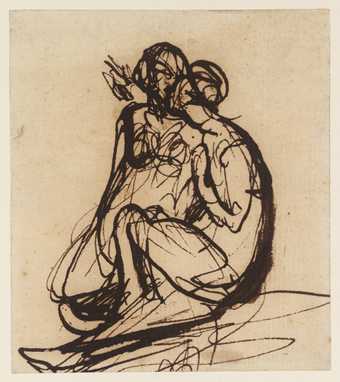
In Tate Britain
- Artist
- George Romney 1734–1802
- Medium
- Oil paint on canvas
- Dimensions
- Support: 895 × 705 mm
- Collection
- Tate
- Acquisition
- Bequeathed by Maj.-Gen. John Julius Johnstone 1898
- Reference
- N01667
Summary
The identity of the mother and child depicted in this life-size portrait is uncertain. The little boy is traditionally thought to be Alexander Johnstone (1775–1849), the grandfather of Major John-Julius Johnstone, the painter’s former owner. Romney’s sitter book records several appointments with a ‘Mrs Johnston’ between November 1778 and March 1779, which may relate to this painting. However, it has also been suggested that the pair represented may be the ‘Mrs Ford and Child’, dated 1778, listed in a rough overview of Romney’s works made by his son. Romney himself notes that the portrait of Mrs Ford was paid for in 1785 by Major Johnstone, lending credibility to that identification.
Whoever the sitter might be, the portrait can be more confidently dated to the period of intense activity following Romney’s return to London from Italy in 1775. The artist had much to prove in these years; the profile he had built up, in the decade between moving to London from his native Lake District in 1762 and leaving for Rome in 1772, having largely faded away. Yet within twelve months of his return Romney was enjoying great success. This was partly due to what he had learnt in Italy and his shrewd choice of a studio in fashionable Cavendish Square but also because of his emphasis on good value and informality. His prices were consistently lower than those of his main rivals Thomas Gainsborough and Joshua Reynolds and he chose to abstain from certain artistic rituals such as exhibiting at the Royal Academy. The loose, spontaneous handling and visible brushstrokes of this painting readily demonstrate the distinctive style of portraiture Romney was developing at this time.
The intimate atmosphere of this portrait, with its minimal accessories and plain background, focuses attention on the tender, informal relationship between mother and child. Romney produced a number of maternal images in the 1770s evoking the Italian Renaissance painter Raphael’s Madonnas; a distinguished model that bears testament to his growing artistic ambition. He was also responding to a wider cultural shift in ideas about child-rearing. In the second half of the eighteenth century a new style of ‘natural’, unmediated parenting was promoted, an idea which owed much to the popular theories of the Swiss philosopher Jean-Jacques Rousseau. In particular, mothers were encouraged to breastfeed, rather than hand their children over to a wet nurse. The close embrace and affection of Mrs Johnstone and her Son (?) clearly expresses these new maternal ideals.
Further reading
Alex Kidson, George Romney 1734–1802, exhibition catalogue, National Portrait Gallery, London 2002.
Alex Kidson (ed.), Those Delightful Regions of Imagination: Essays on George Romney, New Haven and London 2002.
Ruth Kenny
September 2013
Does this text contain inaccurate information or language that you feel we should improve or change? We would like to hear from you.
Display caption
This double portrait presents a tender image of maternal affection. However, the sitters’ circumstances may have been less secure. While the title refers to ‘Mrs Johnstone’, it likely depicts Martha Ford and her youngest son, Alexander. Martha and George Johnstone, the colonial governor of West Florida, had a 15-year relationship from 1763. He is associated with a sugar plantation in Grenada and later became a director of the East India Company, where Alexander also later worked. The portrait was painted for George around the time that their relationship ended.
Gallery label, April 2023
Does this text contain inaccurate information or language that you feel we should improve or change? We would like to hear from you.
Explore
- emotions, concepts and ideas(16,416)
-
- emotions and human qualities(5,345)
-
- tenderness(70)
- actions: expressive(2,622)
-
- embracing(429)
- woman(9,110)
- boy(1,153)
- Johnstone(1)
- individuals: female(1,698)
- family(602)
-
- mother and child(394)
You might like
-
George Romney Lady Hamilton (?as a Figure in ‘Fortune Telling’)
c.1782–4 -
George Romney A Lady in a Brown Dress: ‘The Parson’s Daughter’
c.1785 -
George Romney Mr and Mrs William Lindow
1772 -
George Romney Mrs Mark Currie
1789 -
George Romney Lady Hamilton as Cassandra
c.1785–6 -
George Romney Elizabeth, Countess of Craven, Later Margravine of Anspach
1778 -
George Romney Mrs Robert Trotter of Bush
1788–9 -
George Romney The Beaumont Family
1777–9 -
George Romney Lady Emilia Kerr
1779–80 -
George Romney Mrs John Matthews
1786 -
George Romney Emma Hart as Circe
c.1782 -
George Romney Tom Hayley as Robin Goodfellow
1789–92 -
Manner of George Romney Richard Cumberland the Dramatist
date not known -
George Romney Mrs Richard Cumberland and her Son Charles
c.1770 -
George Romney Mother and Child
date not known

